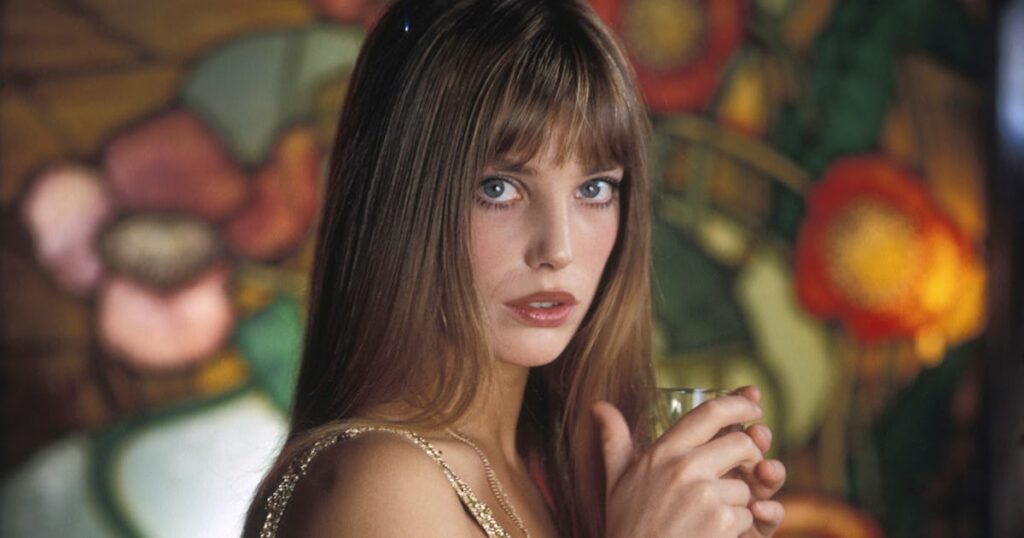What makes an it girl an it girl? To define it is nearly impossible as it is that elusive je nais se quoi quality that is almost hard to describe in words (so abstract French idioms have to be used instead). What can be said about the nebulous quality of the it girl is that it can transcend eras, style genres, and careers. All it girls — Edie Sedgewick, Chloe Sevigny, Alexa Chung, Jennifer Lawrence, Bianca Jagger — possess an essence of coolness, influence, and just a dash of obscurity. But no one embodied all of these qualities as much as Jane Birkin. The actor had all of these characteristics as well as the power of duality, the ability to define the style for an entire country she wasn’t born in, and she became forever associated with one of the most coveted accessories in fashion history.
In her new book, It Girl: The Life of and Legacy of Jane Birkin, author Marisa Meltzer makes the case that Birkin’s unwavering style influence on not only her generation but the many that came after, isn’t defined by the Hermès bag named after her but how she lived in her style. Metzer digs deep into the legacy of Birkin as well as the woman behind the glamour. She spoke with TZR about the universal obsession with Birkin’s style and her generation-crossing influence.
Dual Eras Of Influence
Though one would imagine that Birkin came out of the womb with impeccable taste, that is not the case. Despite being born to a megastar — film and theater actor Judy Campbell — she went through an awkward teenage phase in which she attempted to emulate the trends of her idol Jean Shrimpton, Meltzer tells TZR. The book also casts Birkin as a bit lost as a teen growing up in England in the 1950s in an upper class household. Not interested in pursuing higher education she was sent to Paris for a summer after high school where some of those style roots she would be known for later would be planted.
After returning to London, Birkin had early success as an actor appearing in seminal films such as Blow Up and Wonderwall catapulting her into the heyday of British Swinging ‘60s culture, fraternizing with the likes of Warren Beatty and George Harrison, according to Meltzer’s research. Her style was of the times — think flare pants, floral mini dresses, knit short-shorts — but with her own stamp on it that included self-cut bangs, heavy moody eye liner, and thrift stores fashions. This was also around the time Birkin selected a Portugese basket from the Berwick Street Market to be her everyday essential. Meltzer notes it was a quirky choice but one that would make her distinctive from her contemporaries and eventually imitated. “She was of the moment, yet didn’t look like anyone else…” the author writes.
After her first marriage to composer John Barry dissolved in the late 1960s, and Birkin moved to Paris with her young daughter Kate, she took on a whole new style persona (and entered into her relationship with Serge Gainsbourg). What is significant, Meltzer explains, is that Birkin didn’t just embody a single cultural era, as we see with most style icons. She managed, rather seamlessly, to define two: the Youthquake of Swinging London in the 1960s, and then bohemian Parisian Glamour of the 1970s.
Birkin’s Style Story
After moving to France, where she would spend the majority of her life, Birkin’s signature style really came to fruition. This was the era the actor is best known for sartorially: think Repetto ballet flats, tousled hair, minimal makeup, peasant blouses tucked into high waisted jeans, naked dresses, and her signature aforementioned woven bag. “She combined different places and references. So she had ballet flats, for example, from France, but then she’s pairing it with things that she finds in charity shops,” Meltzer says. As opposed to the current day and age of going online and buying one’s entire fall wardrobe in one purchase, Birkin gradually accumulated items over the years, so each essential and style element seemed to tell the story of her exciting life. “Her wardrobe was a real expression of herself.”
Meltzer points out Birkin was an early pioneer of aging naturally. “She let herself age, which doesn’t mean that she wasn’t fashionable or fancy, but just that she let herself change how she wanted to be seen,” the author says.
In her 40s Birkin would often wear tuxedos to events and in her 50s she sported a daily uniform of men’s corduroys and oversized white t-shirts. During this time she would also maybe show up on a red carpet in jeans, sneakers, and an oversized black blazer. “Quiet luxury is obviously so overused right now, but she really did dress in a way that was very classic. In some ways she dressed a lot like how women really dress today, the way you see women on the street. She let herself age. You aren’t the same person you are at 40, as you are at 70, as you are at 16. She felt it was totally OK to grow up even if the public wants to see you as the same person you were so long ago.”
The Legend Of The Bag
The origins of the Hermès Birkin bag is that of fashion legend and almost sounds made up. In 1983, Birkin was seated next to none other than Jean-Louis Dumas, who was the chief executive of Hermès at the time, on a flight. Ironically, Birkin’s signature basket bag was in dire shape after her third husband, Jacques Doillon, had accidentally run it over with his car, according to the book.
Little did she know an upcoming chance encounter would lead to the creation of one of the most famous objects ever being forever associated with Birkin. She told Dumas she would buy a new bag when Hermès made one with pockets, not knowing with whom she was speaking. She sketched her ideal pocketed trapezoid bag on an airplane sick bag, and a custom Hermés bag was made for the actor a few weeks later. The rest is fashion history.
The bag has become the highest symbol of luxury, with the first original Birkin carried by the namesake herself selling for $10.1 million this past summer at Sotheby’s in Paris. It is considered a superior investment to gold, according to Fortune and cited by Meltzer. But the author points out the overtness of the bag doesn’t align with Birkin’s low-key approach to fashion. “Because she didn’t have a financial stake in the bag, she was able to just have a less nutty relationship with it than we all do.” To everyone else it is a Birkin, but to Jane, it was just a bag.
When asked what Birkin would think of the current dupe culture surrounding Birkin bags (Firkins, Boatkins, Foatkins), Meltzer tells TZR, “She would probably laugh at it. I don’t think that she would buy one, but I think she had a good sense of humor.” To her this was her everyday, beat up bag that she covered with stickers, worry beads, and charms so much so that you could hear her walking down the street before you saw her. In an interview with Vogue in 2011 when her Birkin went on sale on eBay as part of a Red Cross charity auction Birkin said, “There’s no fun in a bag if it’s not kicked around, so that it looks as if the cat’s been sitting on it — and it usually has. The cat may even be in it!”
More Than An It Girl
In her new book, Meltzer goes behind the myth of Birkin’s elusive coolness to reveal a sometimes troubled woman who struggled with the men in her life, her career path, as well as her public persona. “She had the problems we all do, for sure, in life, on a really grand scale. And I also think that she was doing it in the shadow of being covered by the press, which makes it more difficult. She made some very dramatic choices,” Meltzer says.
Decades after she was at the height of her fame, and two years after her death, the world is still enamored with the many looks of Jane Birkin. Perhaps it was that her style was so effortless, so irreverent, and so eternally chic. Or maybe it was that she was so much more than a style icon. The complexity behind the style made her truly authentic, a bit mysterious, and absolutely timeless.

